21 Feb Course changes: Fed could cut rates
Course changes
Fed could cut rates as Japan tightens policy
Macroeconomics
After the deterioration in July, expectations are for a Fed rate cut in September. The Bank of Japan has raised rates and announced bond purchase tapering.
This is the 1st time since the start of the year that macroeconomic indicators have shown signs of slowing. Citigroup’s economic surprise indices show negative surprises for both economic growth and inflation in July for all the major economic zones (United States, Europe, Japan and China).
In the United States, the ISM services and manufacturing leading indicators came in below expectations. In US services, the various surveys gave contradictory signals, with Markit PMI stable and in strong expansion territory, while ISM moved into contraction territory.
Job vacancies (JOLTS report) did not continue to deteriorate in May and stabilized in June. Non-farm payrolls in June came in above economists’ expectations but slightly lower than in May.
US inflation showed signs of slowing. The consumer price index fell from 3.3% in May to 3.0% in June, a trend confirmed by the first estimate of the GDP deflator for the second quarter, which came in well below expectations at 2.3%. As a result, investors quickly adjusted their expectations of a first Fed rate cut in September.
In the eurozone, inflation remained stable at 2.5% in June and 2.6% in July. In terms of economic growth, the preliminary estimate for the second quarter came in slightly above expectations at 0.6%.
The leading indicators show a deterioration in both manufacturing and services in July, with a more marked deterioration in services, which remain in expansionary territory for the time being. Against this backdrop, the ECB has left its refinancing rate unchanged at 4.25%.
The UK began its rate-cutting cycle by cutting its key rate from 5.25% to 5%. This move comes at a time when inflation is hovering around the 2% target, but core inflation remains high at 3.5%, and inflation is expected to pick up slightly in the coming months. It will probably be some time before the next cut.
There has been no change at the Swiss National Bank, which has already cut rates twice in the first half of the year. Inflation fell slightly in June, from 1.4% to 1.3%, and the KOF leading economic indicator worsened in June.
The biggest surprise in July came from the Bank of Japan, which not only raised its key rate from 0.1% to 0.25% but also announced the gradual reduction of its program of purchases of Japanese government.
Contact one of our DBank Advisors by visiting our web page www.dbankonline.com
THANK YOU FOR YOUR INTEREST IN OUR PAPER!
By downloading our Outlook and submitting your contact information, you’re joining our subscribers’ community, where you’ll receive updates, insights, and exclusive content straight to your inbox. Stay informed and connected with the latest developments in the Financial World Market. We look forward to sharing valuable information with you!


